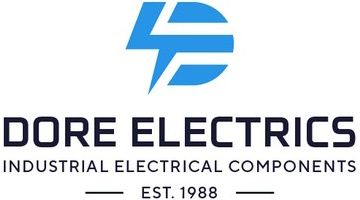Shop Now
-
Brands
- Banner Engineering
- Eaton
- Elsema
- Kyoritsu
-
Phoenix Contact
- Cables and Lines
- Connectors
- Control Cabinet Accessories
- Device Circuit Breakers
- DIN Rail Adapter
- Distribution Blocks and device Terminal Blocks
- Distributors, Adapters, and Conductor Connectors
- EMC Filter
- Energy Monitoring
- Ferrules
- Fixed Bridges
- Fuse Plugs
- Hand Tools
- I/O Extension Module
- Industrial Communication
- Industrial Lighting and Signal Lights
- Marking Material
- Motor, Machine, and System Monitoring
- NLC Series
- PCB Terminal Blocks and PCB Connectors
- PLCs (controllers) and I/Os
- Plug-In Modules
- Potential Bridge
- Power Distributors
- Power Supply Units
- Printer
- Relays and Optocouplers
- Safety Relay Modules and Sensors
- Short-Circuit Connector
- Signal Conditioners and Measuring Transducers
- Surge Protection
- Switching Jumper
- Switching Lock
-
Terminal Blocks
- Accessories
- DIKD Series
- DOK Series
- DTME Series
- MPT Series
- MTK Series
- MUT Series
- PT Series
- PTIO Series
- PTME Series
- PTT Series
- PTTB Series
- PTTBV Series
- PTV Series
- RBO Series
- ST Series
- Trunk Line Branch Terminal
- UDK Series
- UIK Series
- UK Series
- UKH Series
- UKK Series
- UKKB Series
- URTK Series
- USLKG Series
- UT Series
- UTME Series
- UTT Series
- UTTB Series
- Terminal Markers
- Test Adapter
- Test Plug Strip
- Timer Module
- Uninterruptible Power Supplies (UPS)
- Turck
- Conduit & Fittings
- Controls & Automation
- Enclosures
- Hardware
-
Industrial
- Accessories
- Cable
- Cable Management
- Circuit Protection
- Crane Hoist Pendants
- Earth, Netural, Active Bars
- Emergency Lighting Kits
- Fans, Vents and Accessories
- Float Switches
- Foot Switches
- Heat Shrink
- Industrial Switches, Plugs and Accessories
- Insulators Bus Bar Cleats and Plugs
- Load Break Disconnector
- Meter Disconnect Links
- Power Supplies and Transformers
- Rotary Encoders
- Safety Control Equipment
- Sirens, Bells and Tower Lights
- Solenoid Air Control Valves
- Switchboard Meters
- Tools
Din Rail – The unsung hero of industrial electrical applications
In industrial applications, there are some electrical components that can easily go unnoticed despite being integral to countless applications.
One such unsung hero is din rail. This simple but versatile metal rail sits inside electrical enclosures to mount equipment such as circuit breakers, terminal blocks and power supplies.
While simple in design, it’s vital for installing, maintaining and operating electrical equipment and brings many benefits.
This article covers the advantages of using din rail, and the top considerations in choosing the din rail that’s best for your application.
What are the benefits of din rail?
Din rail systems allow you to:
- Save time
Instead of panel mounting each individual component separately, din rail provides modularity allowing you to save time by snapping components easily into place on the rail.
This flexibility also simplifies any maintenance, troubleshooting, and replacement procedures.
- Establish an organised system layout
Industrial electrical components mounted on din rail are organised, accessible and secure. This organisation supports efficient maintenance, reduces downtime and also enhances overall system reliability and safety.
- Save space (and get cost efficiencies)
With their compact design and standardised format, din rail helps you save valuable space in enclosures by neatly bringing wiring circuits together in tight configurations. This can significantly reduce the overall amount of wiring and enclosure space needed, providing cost efficiencies.
Considerations when choosing the right din rail for your industrial application
Material
Din rail is often available in both aluminium and steel. When it comes to choosing the right material, here’s what you need to know.
- Aluminium Din Rail
- Lightweight
- Corrosion-resistant
- Suitable for use in humid conditions
- Provides good protection against rust and oxidation
- Usually more expensive than steel
Aluminium din rail is ideal for general industrial use, control panels and applications where weight matters.
- Steel Din Rail
- Heavier in weight
- Offers better strength and durability
- Usually cheaper than aluminium
Steel din rail is often used in industrial settings where moderate corrosion resistance and strength is required.
Slotted vs Un-slotted
Another factor to consider is whether you need din rail that is slotted (has pre-cut mounting holes) or un-slotted.
- Slotted Din Rail
- Makes it easy to adjust the position of industrial electrical components
- Provides space for internal and external wiring circuits to converge, promoting neat and organised layouts
- Great for applications with limited space where efficient wiring management is essential
- Un-slotted Din Rail
- Provides a fixed position for components, ensuring stability and preventing accidental movement
- A cost-effective option as they are simpler in design
- Great for applications where you don’t anticipate frequent changes to the position of industrial electrical components
At Dore Electrics we stock a range of aluminium and steel din rail in various sizes to suit almost any industrial application.
Check out our online store for fast and easy ordering or give us a call to discuss your needs.
